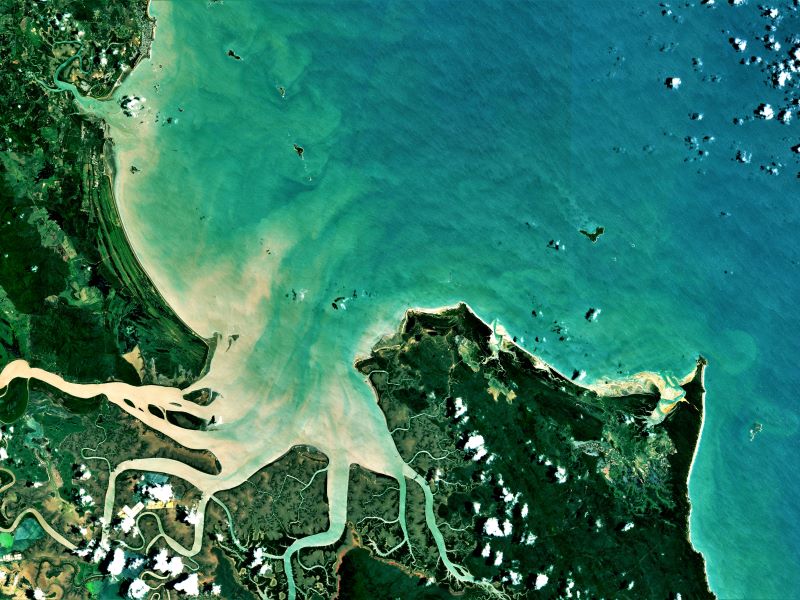The CSIRO’s world-first ground to space water quality monitoring system will be trialled in California in a significant expansion for the national science agency mission.
The $83 million AquaWatch mission – one of a handful of the CSIRO’s large scale scientific and collaborative research initiatives – uses Australian made ground and satellite sensors and big data to create a multi-day forecast of water quality at waterways.
Since being announced last March, the mission has used a network of earth observation satellites and ground-based water sensors to test forecasts and monitoring for seven Australian waterways, including the Great Barrier Reef.

On Monday, the CSIRO announced an expansion of the mission into the US under a partnership with Californian universities and government agency, the United States Geological Survey.
The cohort will test AquaWatch at the Sacramento-San Joaquin River Delta, an important water body for agriculture and natural ecosystems of the San Francisco Bay.
“Australia and California share many of these [water quality challenges… AquaWatch will be a world-first system which combines data from water sensors and satellites, processing the information with advanced data analytics to provide near-real-time water quality monitoring and forecasts” CSIRO’s Dr Alex Held said.
The sensors will be installed near where the Sacramento and San Joaquin Rivers merge to collect data that assists farmers and in the preservation of natural ecosystems.
“Using the sensor, we can estimate turbidity, an important water quality measurement for the critically endangered fish, the Delta smelt,” UC Merced’s Dr Erin Hestir said.
“It can also be used to give insight into where contaminants of concern, such as mercury, may travel.”
The CSIRO launched AquaWatch last year as one of only nine national missions, putting it alongside research areas of national priority like drought resilience, net zero emissions, and antimicrobial resistance.
Data from the AquaWatch mission – which is expected to run until at least 2030 – will be useful for managing water environments, including levels in rivers, or identifying and catching plastic waste before it reaches the ocean.
The UN has warned water kills more people than war, while 3 billion people are relying on water that has an unknown quality.
While Australia generally has very high-water quality, the environment is under unprecedented pressure from shifts like climate change and agricultural activities.
The CSIRO’s chief executive last week called for an expansion of industry collaboration on medium to large research and development projects that take a decade or more, and that involve hundreds of researchers.
Do you know more? Contact James Riley via Email.

